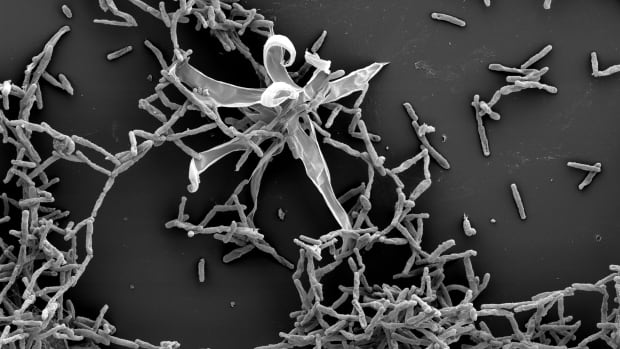
A tiny microbe recently isolated in Bedford Basin has been named for Halifax.
T. haligoni is a type of bacteria known as a diazotroph — or nitrogen fixer.
The microscopic organism was recently described in an article in the Journal of Science Advances. Sonja Rose, a PhD candidate in microbial physiology and maritime biogeochemistry at Dalhousie University, co-authored the paper.
Nitrogen is an essential nutrient for the survival of all living things. Finding out how diazotrophs make nitrogen available is new scientific territory.
In an interview with Information Morning Halifax, Rose said there are two types of nitrogen — biologically available nitrogen and biologically unavailable nitrogen.
‘Fertilizers of the sea’
The former are nitrogen sources that animals — like humans — and plants can take up and use for fuel, while the latter can only be tapped into by a select group of bacteria, like T. haligoni, to then convert into biologically available nitrogen.
“The nitrogen fixers, we find them in terrestrial habitats … like the bean plant in your garden … but then we also find them in the marine world where we like to think of them as fertilizers of the sea,” Rose said.
Once the diazotrophs take up the biologically unavailable nitrogen and convert it, it’s used to feed itself, as well as the surrounding marine organisms.
This is one of the first diazotrophs to be isolated in the Bedford Basin, she said, which is why researchers named it after the city.
She added that T. haligoni is really only one of about five species that have been cultured globally. Of those five, T. haligoni is the only one with a global distribution.
Information Morning – NS8:15Tiny microbes isolated in the Bedford Basin advance how we understand the ocean
After a decade of work, researchers at Dalhousie University have officially isolated and described – for the first time ever – a tiny organism in the Bedford Basin. It’s a microbe they’ve named T. haligoni. PhD candidate Sonja Rose explains this groundbreaking finding and how it contributes to our global understanding of climate change.
“It’s really exciting science because now we actually can understand and start to better our models when we’re trying to figure out how much nitrogen this one bacteria is actually putting into the ocean,” Rose said, “and it turns out that it is quite significant.”
To isolate T. haligoni, Rose said researchers took water from the basin and placed it into a cell sorter, which uses a laser to pick out individual cells. They then placed those cells on a nitrogen-free plate to see what would grow.
They were able to get a full genome of the bacteria, which will be helpful in figuring out what it feeds on.
There is also the chance the bacteria may be able to degrade oil, something that could be useful in oil-spill situations, Rose added, though that hasn’t been tested.
With the research into diazotrophs still a fairly new scientific frontier, Rose said the research will help other scientists better understand how the bacteria functions, particularly as weather patterns continue to shift.